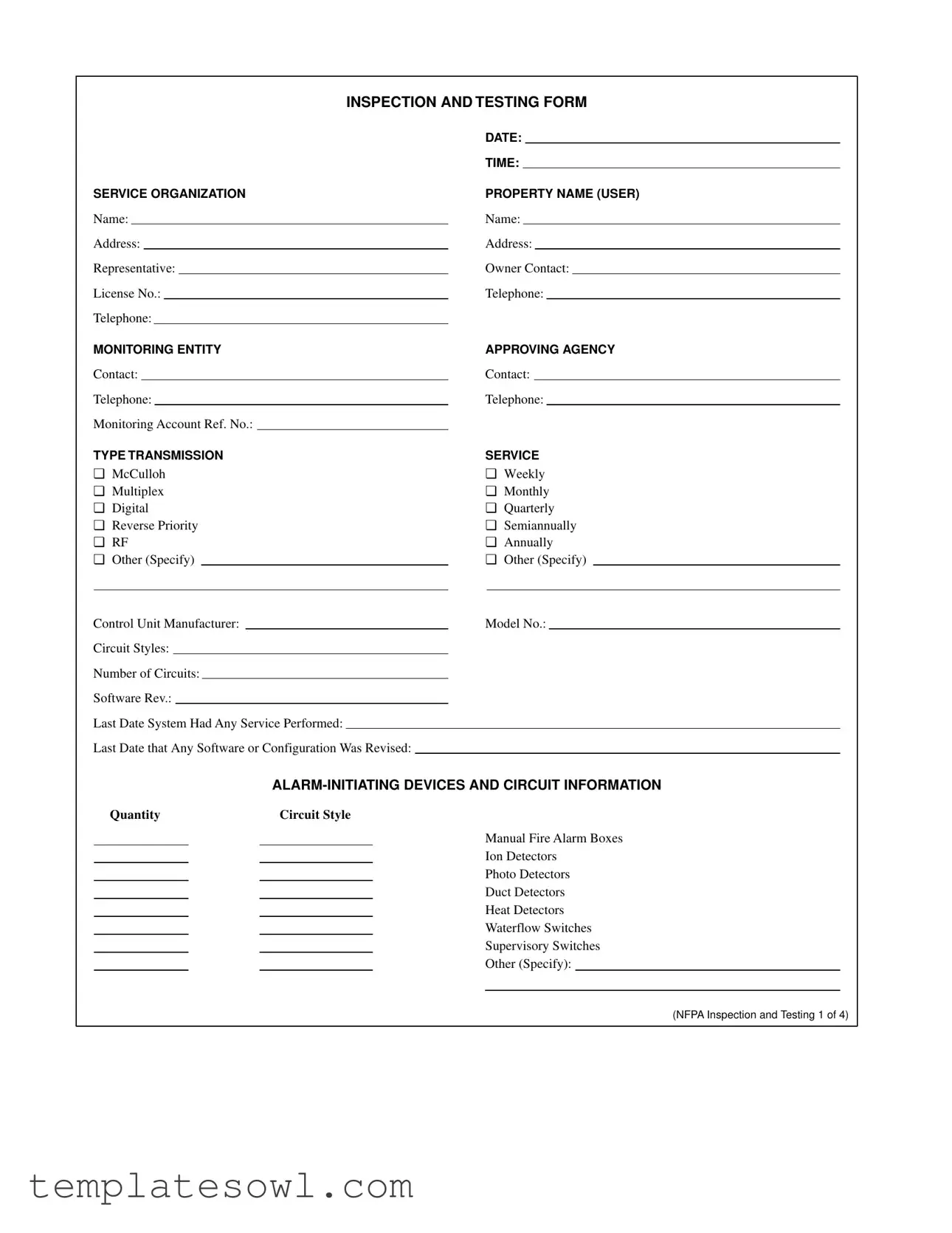Filling out the NFPA Testing form is a critical task that ensures fire safety systems are properly inspected and maintained. However, many individuals make common mistakes during this process. Understanding these pitfalls can help in accurately completing the form, thereby promoting compliance and safety.
One prevalent mistake is failing to provide accurate contact information for all parties involved. Names, addresses, and phone numbers must be current and correct to ensure effective communication. If the monitoring entity or service organization cannot be reached during an emergency, crucial delays may occur. Double-checking this section before finalizing the form can mitigate such risks.
Another error occurs when individuals neglect to specify the type of transmission service. Whether it's digital or multiplex, accurately identifying the service type is essential for clarity. This designation aids in understanding the system's operational specifics and can impact the maintenance schedule.
Incomplete information regarding the quantity of alarm-initiating devices is also common. Omitting or inaccurately reporting the number and type of devices can lead to inefficient testing and inspections. It's important to ensure that every device is accounted for to uphold the integrity of the safety system.
People often overlook the notification section regarding who was informed about testing. Marking “Yes” or “No” without providing details on who was notified may lead to confusion later. Explicitly documenting who received notifications, alongside the time, ensures everyone is kept in the loop.
Miscommunication about alarm and supervisory signals is another frequent oversight. When testers check the functional status of devices, it is vital to provide detailed comments. Neglecting to include notes on tests can result in unresolved issues, leaving safety systems vulnerable.
Furthermore, individuals may forget to indicate if circuits are monitored for integrity. This oversight is significant, as it informs subsequent inspections and maintenance protocols. Ensuring this detail is included can prevent possible security and operational failures.
Finally, the significance of documenting the system's test results is often underrated. Every testing approval, failure, and correction should be meticulously recorded. This documentation not only complies with NFPA standards but also creates a reliable history of system performance, which is invaluable during inspections or audits.
In conclusion, taking the time to avoid these mistakes when filling out the NFPA Testing form can greatly enhance the effectiveness of fire safety measures. Accuracy and thoroughness in each section reinforce a proactive safety culture.




